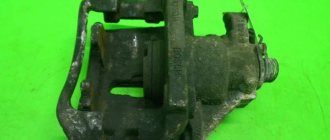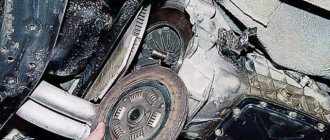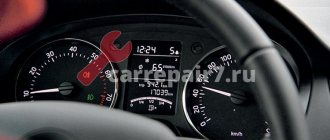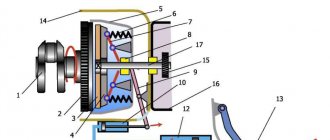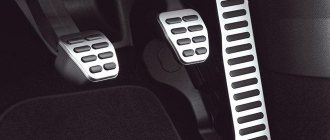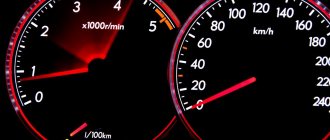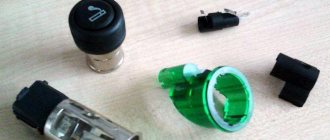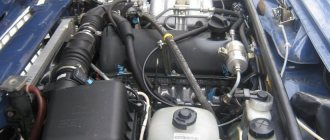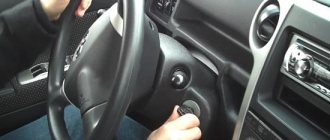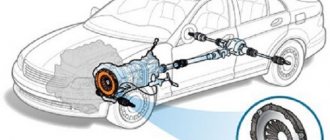A serviceable and efficient braking system of a car is a guarantee not only of road safety, but also often the safety of the life of the driver, passengers and pedestrians. And one of the signs of serious problems for the car and its owner is a situation when the brake pedal fails. This process can occur either slowly or quickly. It happens that a recessed pedal does not return to its place at all. In any case, all of the above signs are a reason for serious diagnostics of the brake system. However, first you should find out what caused the emergency situation.
The brakes fail. help (VAZ-2114)
December 15, 2011, 10:37 pm #1
In wet weather (snow and rain), you warmed up the car and drove off, but there were no brakes, even the handbrake didn’t work? The pedal is pressed hard as if the vacuum cleaner is not working. After small presses on the pedal, the handbrake and brake also begin to work. what is it, tell me.
December 15, 2011, 10:40 pm #2
opoek, December 15, 2011, 10:37 pm, #1
in wet weather (snow and rain) you warmed up the car and drove off, but there are no brakes, even the handbrake doesn’t work? The pedal is pressed hard as if the vacuum cleaner is not working. After small presses on the pedal, the handbrake and brake also begin to work. what is it, tell me.
Precisely in the raw? I had this problem on four in frost below 20
December 15, 2011, 10:43 pm #3
There was no such thing in frost and there is no such thing in summer either. the buddy also has the same nonsense and the car is the same. after frost when it starts to thaw nonsense this is what happens
December 15, 2011, 11:14 pm #4
We kindly request. Please don't create multiple threads on the same issue. If you want a topic to rise to the top, simply repeat the question (or add information) in the previously created
Hyundai Elantra gls 1.6 Nissan Bluebird 1.8 SLX-G
December 15, 2011, 11:28 pm #5
opoek, December 15, 2011, 10:37 pm, #1
in wet weather (snow and rain) you warmed up the car and drove off, but there are no brakes, even the handbrake doesn’t work? The pedal is pressed hard as if the vacuum cleaner is not working. After small presses on the pedal, the handbrake and brake also begin to work. what is it, tell me.
Check first to see if they are getting wet? just drive leisurely for 300-500 meters with the brake pedal pressed, if then they start grabbing, then that’s it.
In general, you need to go look at the whole system)
Hyundai Elantra gls 1.6 Nissan Bluebird 1.8 SLX-G
December 15, 2011, 23:30 #7
What usually happens to us, the wear on the pads, discs, and drums is enormous, the cylinders creep apart, leak, stop working,
What do you mean there are no brakes? Does the pedal fail or is it tight, but the car does not brake?
December 15, 2011, 11:31 pm #8
PozitiFF, December 15, 2011, 23:28, #5
Check first to see if they are getting wet? just drive leisurely for 300-500 meters with the brake pedal pressed, if then they start grabbing, then that’s it.
In general, you need to go look at the whole system)
It’s the first day of the thaw that all this happens, and then everything is normal
December 15, 2011, 11:35 pm #9
it is pressed with a lot of pressure, there are no brakes and the handbrake does not work, you drive 100 meters by pressing and everything works again, and this is only one day of the thaw
Hyundai Elantra gls 1.6 Nissan Bluebird 1.8 SLX-G
December 16, 2011, 01:00 #10
If so, then there may be something wrong with the vacuum seal, or the hose on it is clogged, only when you raise the speed, it is vacuumized, but what does the handbrake have to do with it?
December 16, 2011, 08:18 #11
PozitiFF, December 16, 2011, 01:00, #10
If so, then there may be something wrong with the vacuum seal, or the hose on it is clogged, only when you raise the speed, it is vacuumized, but what does the handbrake have to do with it?
I can’t even imagine how the handbrake can not work at first and then start
. The rest of the system is understandable, there is a vacuum brake, a gas turbine engine, etc., but a handbrake? In general, if the pedal is sticky, then first of all look at the vacuum booster. IMHO
Hummer H2 6l.gasoline.323l.s
December 16, 2011, 08:27 #12
Bleed the brakes. Press hard - either the rear or the front does not brake. Possibly a tee in the back. And if the vacuum sealer is covered, then it doesn’t care about weather conditions
December 16, 2011, 08:34 #13
Zhypper, December 16, 2011, 08:27, #12
Bleed the brakes. Press hard - either the rear or the front does not brake. Possibly a tee in the back. And if the vacuum sealer is covered, then it doesn’t care about weather conditions
Don't tell me. Such as now, perhaps. But low temperatures can have an effect. I had a four, up to -20-25 the brakes work fine, below - they are oak and squeak when pressed until you press several times (well, or it doesn’t heat up). From spring to late autumn - no problem). I approached the specialists. They say it's a vacuum sealer
Hummer H2 6l.gasoline.323l.s
December 16, 2011, 08:51 #14 + 1
Serega_karel, December 16, 2011, 08:34, #13
Don't tell me. Such as now, perhaps. But low temperatures can have an effect. I had a four, up to -20-25 the brakes work fine, below - they are oak and squeak when pressed until you press several times (well, or it doesn’t heat up). From spring to late autumn - no problem). I approached the specialists. They say it's a vacuum sealer
What to do if the brake pedal fails after replacing the pads
The vehicle must always be maintained in perfect working order. One of the main elements of a vehicle is the braking system. The functioning of the entire vehicle and the safety of the driver depend on its proper condition. That is why, at the first signs of a malfunctioning brake pedal or its failure, it is necessary to contact specialist auto mechanics.
A loose brake pedal must be corrected as quickly as possible.
Main causes of malfunction
Before starting repairs, the cause of the failure should be determined. It could be:
- Malfunction of the main brake cylinder;
- Unadjusted gap between the pedal and the cylinder piston;
- Poor quality brake fluid or insufficient brake fluid;
- Incorrectly installed brake disc or pads;
- Faulty vacuum pump.
How to diagnose a problem if the brake pedal fails
In order to diagnose the brake pedal for damage, it is necessary to carry out a number of measures. It is recommended to do this at a service station, by the hands of experienced specialists. It can cost up to 5 hours of time and a round sum. However, if financial capabilities do not allow you to go to the service, then, if desired, any car owner can solve the problem on their own:
- Lack of brake fluid. You just need to check for its presence and top up if necessary;
- Checking the brake pedal.
- Checking pads and discs. Pedal failure can occur due to insufficient pressure on them;
- Checking the brake cylinder;
- Checking the integrity of the pumps.
Find out in our material how to change wipers on a car and why many drivers prefer frameless wipers.
How to install HBO and register with the traffic police and how to avoid unnecessary troubles - see here.
Finding out why the brake fails
It is important to fully diagnose the brake system, since one malfunction may be accompanied by another.
Most often, the pedal fails due to the fact that the brake system is serviced with low-quality brake fluid . This fluid can cause the brake lines to swell and begin to disintegrate. In order to check if there is a problem with them, you need to blow out the brake pipes. For comparison, you need to take a new tube and blow it out in the same way to understand how badly the car’s brake hose is clogged.
An air lock in the brake system can also cause pedal failure. The air that gets into the brake pipes begins to compress. This happens due to wear on the lines or improper replacement of the brake fluid. Pressing the brake pedal does not perform the braking process, but compresses the air. In this case, the pads are practically motionless. Braking is ineffective or completely absent.
Problems with the master brake cylinder (pictured). Its rubber seals may swell and delaminate. This usually occurs when using low quality brake fluid and due to tire wear. All this leads to the fact that the system is susceptible to depressurization and leakage of liquid. This problem can be solved by replacing the rubber seals. After this, you need to bleed the system to eliminate air congestion. Replacing the master brake cylinder will be necessary in case of excessive wear on the working surfaces.
How to check the brake pedal
Checking the brake pedal is that when pressed there should be no play in different directions, no extraneous sounds and no failure. The pedal may become rusty over time and may not be fully functional. The solution to the problem is to replace it with a new one. In addition, you should determine whether the distance between the brake pedal and the piston is adjusted correctly. To do this, the pedal is pressed by hand, released and monitored. If the pedal pauses at a certain stage of returning to its original position, then the problem is in adjusting the gap.
When not to panic
- If you got behind the wheel, decided to start the engine after a long period of inactivity, pressed the brake and started the engine, and at that moment the pedal “went away,” then there is no need to look for a malfunction: the phenomenon is normal. The fact is that when the car starts, the hydraulic vacuum booster begins to work: the process involves installing the mechanisms of the unit into the working position. It’s just that there is a difference between the force transmitted to the pedal when the engine is turned off and when the engine is running.
- If the brake fails after completing repair work to replace the pads, it also does not always indicate problems. In this case, the pedal begins to “go away” after bleeding the system, but then functions normally. This is due to the pistons of the working brake cylinders - they “search” for some time for the optimal gap between the disc and the pads.
Hello guys, hello to all the subscribers of my channel: Everyone who watches my channel is watching this video, today I would like to make a video review of the brake system.
In general, this situation occurs when you press the brake when the car is moving to first. Once the pedal falls completely the second time, the car slows down before and after the third. worse, accordingly, the car is already completely:
It stops what exactly is the reason: The way I encountered this entire brake system, perhaps for someone it will reduce time and reduce financial expenses, I can say:
Do-it-yourself brake bleeding
The failure of the brake pedal in VAZ cars can be overcome by carrying out the process of bleeding the system.
Before you start bleeding the brake system, you need to study the car's instructions, which contain a clear bleeding scheme. If there is no such scheme, then the wheels are pumped from right to left (rear right and left, then the front ones in the same way).
You also need to prepare the following necessary elements: a hose and any plastic or glass container.
The work progresses like this:
- Brake fluid is poured into the master cylinder;
- The brake pipe fittings are cleaned;
- Brake fluid is added to the container, into which one end of the hose is inserted. The other end is inserted into the fitting;
- An assistant is brought in to press the brake pedal several times and hold it down. At this time, you need to unscrew the fitting and check the liquid that leaks out. When the system is aired, air bubbles may be noticeable;
- Next, the fitting is tightened and bleeding continues with three wheels, which should be pumped according to this scheme.
Drivers must pay close attention to their “iron horse” and periodically carry out diagnostics and quality maintenance. First of all, this concerns the braking system. Checking it regularly will make it possible to avoid such troubles as the brake pedal sinking.
VAZ 2114 brakes poorly and weakly
The car brakes poorly. At speed you have to press the brakes with all your might. The car brakes very lazily, smoothly, and not sharply, as it should be when you press the brake hard. The vacuum cleaner is working. The brakes are normal. The brake discs are good. Where to look?
Is there a difference between pressing when the engine is off and when the engine is running? Pump it 5 times and press and start the engine the pedal should go away a little, which means the vacuum is pumping
0 0 Answer rating: 0
Alexey, yes, I did that, the pedal fails, the vacuum cleaner works
0 0 Answer rating: 0
Alexey, urgently check that all the wheels are skidding. Maybe the butt is completely silent
0 0 Answer rating: 0
Alexey, what is use? type check if all wheels are braking? But as?
0 0 Answer rating: 0
Alexey, at least on dusty asphalt, brake to the floor and see if there are tracks left by all the wheels or not.
0 0 Answer rating: 0
Alexey, I'll try. And if it turns out that everyone is slowing down, then where to dig further? What other reasons could there be? When I brake, the car brakes evenly, the steering wheel does not move.
0 0 Answer rating: 0
Alexey, perhaps air
0 0 Answer rating: 0
Alexey, I also thought about this. Does it make sense to pump them up?
0 0 Answer rating: 0
Bleed the brakes. The rear cylinder may still be leaking.
0 0 Answer rating: 0
Pump the brakes or check the cylinders
0 0 Answer rating: 0
pump air there. start from the farthest one, I pump up the rear left-right, then the front right-left. (And for those wise guys who say that this is not correct cross to cross and something like that, it’s your decision) another important point needs to be pumped in the pit and not by jacking it up (for those who say that this is nonsense, go to hell...) because there is a type of load sensor there, I don’t know what it’s called according to the textbook
0 0 Answer rating: 0
Brake system design
Before you begin to consider the problem, you need to understand the basics of the design and operation of the braking system. Most modern cars are equipped with drum and/or disc brakes with a hydraulic drive, which consists of:
- brake pedal - a control body that transmits the driver’s command to the system;
- vacuum booster - necessary to increase braking efficiency by increasing the pressure in the system;
- master brake cylinder – ensures separation of brake circuits and direction of forces to each wheel;
- working wheel cylinders - act directly on mechanical elements (caliper or expansion fist), providing wheel braking;
- pipelines and highways - connect all elements together and serve as guides for the movement of brake fluid.
The role of the working body directly responsible for braking is the pads acting on the brake disc or drum.
Partial destruction of the reinforced hose
The flexible hoses that connect the wheel brakes to the hydraulic system located on the body are not actually flexible in all directions. When high pressure is created inside them, and this in the braking system can reach 200 atmospheres , they exhibit significant rigidity to expansion. This is ensured by a durable reinforcing shell made of textile cord located between two rubber layers.
If the cord breaks due to a manufacturing defect or natural aging, the inner rubber shell, as a rule, remains intact. By this time, the outer one is already usually covered with a network of small and significant cracks. In any case, the rigidity of the hose is lost, and it begins to change its internal diameter under the influence of operating pressure. And that means volume too. To compensate for this change, the master cylinder piston has to move further forward, causing the pedal to sink. The hose does not completely collapse only because the pedal stroke has a natural limit. The brake circuit doesn't actually work. The brake pedal fails, but the brake fluid does not flow out.
To prevent such failures, brake hoses must be mercilessly replaced when external cracks appear. Moisture and dirt penetrate into them, and in winter ice forms there, which inevitably destroys the reinforcing shell. We must remember that the outer rubber of the hose has a protective function; as soon as it cracks, the hose loses all its properties.
Read also : When you turn the key in the ignition, nothing happens
Finding the cause of pedal failure
The most common reason, which accounts for up to 70% of cases of brake pedal failure while the engine is running, is airing of the system, that is, atmospheric air entering the pipelines and lines through which the brake fluid moves. This, in turn, may be caused by the following factors:
- Low fluid level in the compensating tank - when the brake fluid level drops below the minimum mark, the vacuum created by the system elements begins to draw air in.
- Severe mechanical wear of the pads and working surfaces when the fluid level is close to the minimum - in combination, these phenomena lead to airing due to the pistons traveling too deep in the brake cylinders.
- Incorrect choice of brake fluid - a discrepancy between the fluid class, operating conditions and design features of the system can cause destruction of seals and cuffs, and the formation of viscous clots - “thrombi”.
- Boiling of the liquid - occurs when the system is severely overheated, for example, during prolonged aggressive driving in the hot season. Causes sudden and severe pedal failure due to changes in the physical properties of the substance.
- Depressurization is the occurrence of breakdowns, breaks, leaks in system elements and places and contacts through which brake fluid flows out and air gets in.
In addition, pedal failure is often associated with a rupture of the vacuum booster diaphragm. This type of malfunction is easy to diagnose - it only appears when the internal combustion engine is running, and the brake fluid level does not change while the pedal is depressed. This is explained by the fact that a torn diaphragm is not able to create the required vacuum in the amplifier chamber even with full pedal travel.
If the pedal does not fall completely, but moves jerkily, going through some areas easily, and others with considerable effort, we can conclude that the pads or caliper are not installed correctly or are poorly secured. However, do not forget that the first two to three hundred kilometers after their installation may also be due to the natural break-in of parts.
The liquid turned into soda
The working fluid of brake hydraulics is capable of transmitting force only if it retains its incompressibility. Liquids and solids have this property, but not gases. The appearance of any of them inside the system ensures its failure. The reasons why the brake pedal fails can be different.
- The system seals are made of a material that blocks the path of both liquids and gases. But at a certain stage of their aging, a stage is possible when they still hold liquid with difficulty, but air begins to pass almost unhindered . As a result, during any braking, the moving parts are likened to a pump, pumping outside air into the hydraulic area. It accumulates and partially dissolves in the liquid. The incompressibility of the working fluid disappears, the stroke of the working cylinder rod increases.
- In addition to the external penetration of parasitic gas, it can also form from the liquid itself. It has the property of hygroscopicity, that is, it is capable of dissolving water vapor from the atmosphere well. The boiling point of water is significantly lower than that of the original composition, which engineers specially worked on, increasing its temperature threshold. The resulting water vapor is a gas, so the phenomena already described above occur. Moreover, this will happen at a critical moment, when the brakes work intensively, which is accompanied by heating.
- More prosaic reasons for airing the brakes are also possible. These are errors in their repair and poor pumping. This is what will appear the first time you try to brake urgently.
Treatment of the situation comes down to following basic brake care rules. The fluid must be changed on time, as specified in the instructions for the car, and not use cheap substitutes. Inexperienced personnel who have little understanding of the technological process should not be allowed to repair brakes.
Troubleshooting
We recommend that you always check the brake system before driving, especially on older vehicles or if the brakes have already been repaired. However, if the pedal fails while driving, the first thing you need to do is stop the car. To do this, you can use the handbrake (do not overdo it to avoid skidding), and also, if you install a manual transmission, brake the engine - shift to lower gears and shift the gears. The main thing is to remain calm, act carefully and carefully.
Now let's talk about repairs. If you find that air has entered the system, you need to accurately determine the cause. If there is no depressurization, you can limit yourself to bleeding the brakes to remove air pockets, otherwise more complex repairs will be required. Bleeding can also be done at home, but if you do not have experience in such work, it is better to contact qualified specialists. In addition, if the system has boiled, you should think about changing your driving style, installing ventilated discs, and using high-temperature brake fluid.
If the problem lies in a ruptured amplifier diaphragm, it is usually enough to replace it with a new one. This is a fairly simple and cheap type of repair. Another thing is problems in the wheel brake mechanisms. Their installation must be carried out with precise observance of alignment and clearances, and the result of the work must be carefully monitored.
Are adjustments done differently on different brands of cars?
The above procedures are universal and can be performed on machines from any manufacturer. The essence of the procedure is always the same - to reduce or increase the pedal stroke by tensioning or loosening the cable, or adjusting the hydraulic pusher.
But when adjusting the clutch in cars of different brands, there may be some differences. For example:
- normal pedal amplitude or clutch clearance;
- procedure for accessing the clutch adjusting and control nuts. So, in a VAZ-2114, 2115 you will have to remove the battery before starting work, and in a Lada Kalina you will have to unscrew the air filter.
Before starting work on adjusting the clutch, read the technical information about your vehicle, the operating instructions and the repair manual. This will allow you to complete the procedure correctly.

